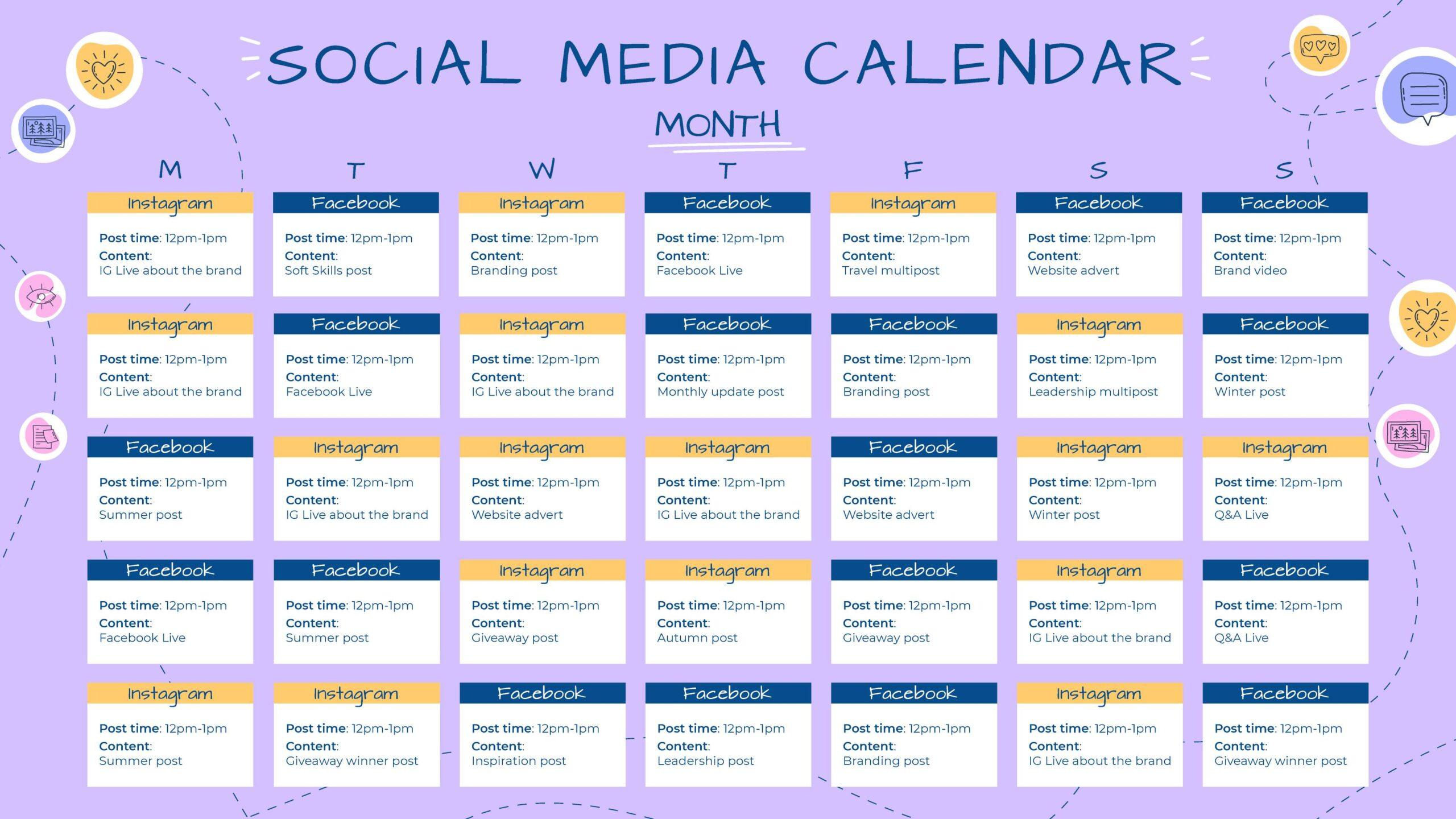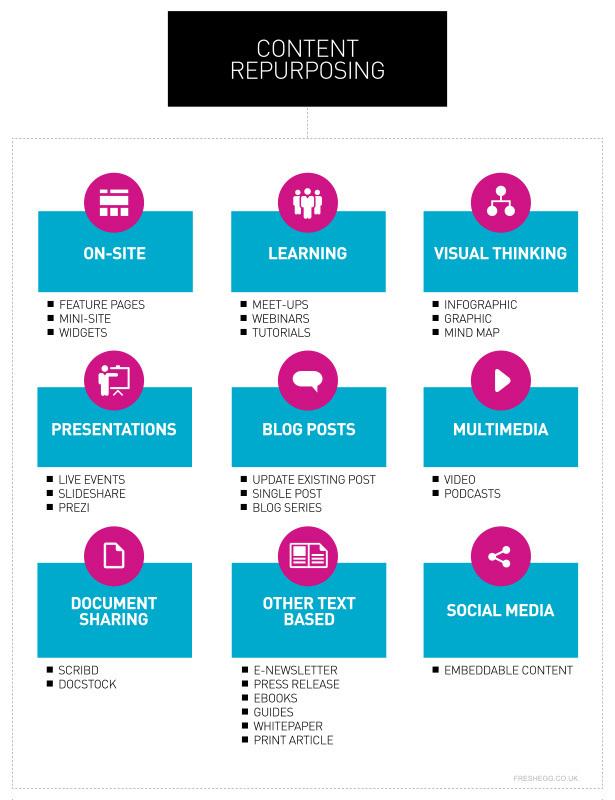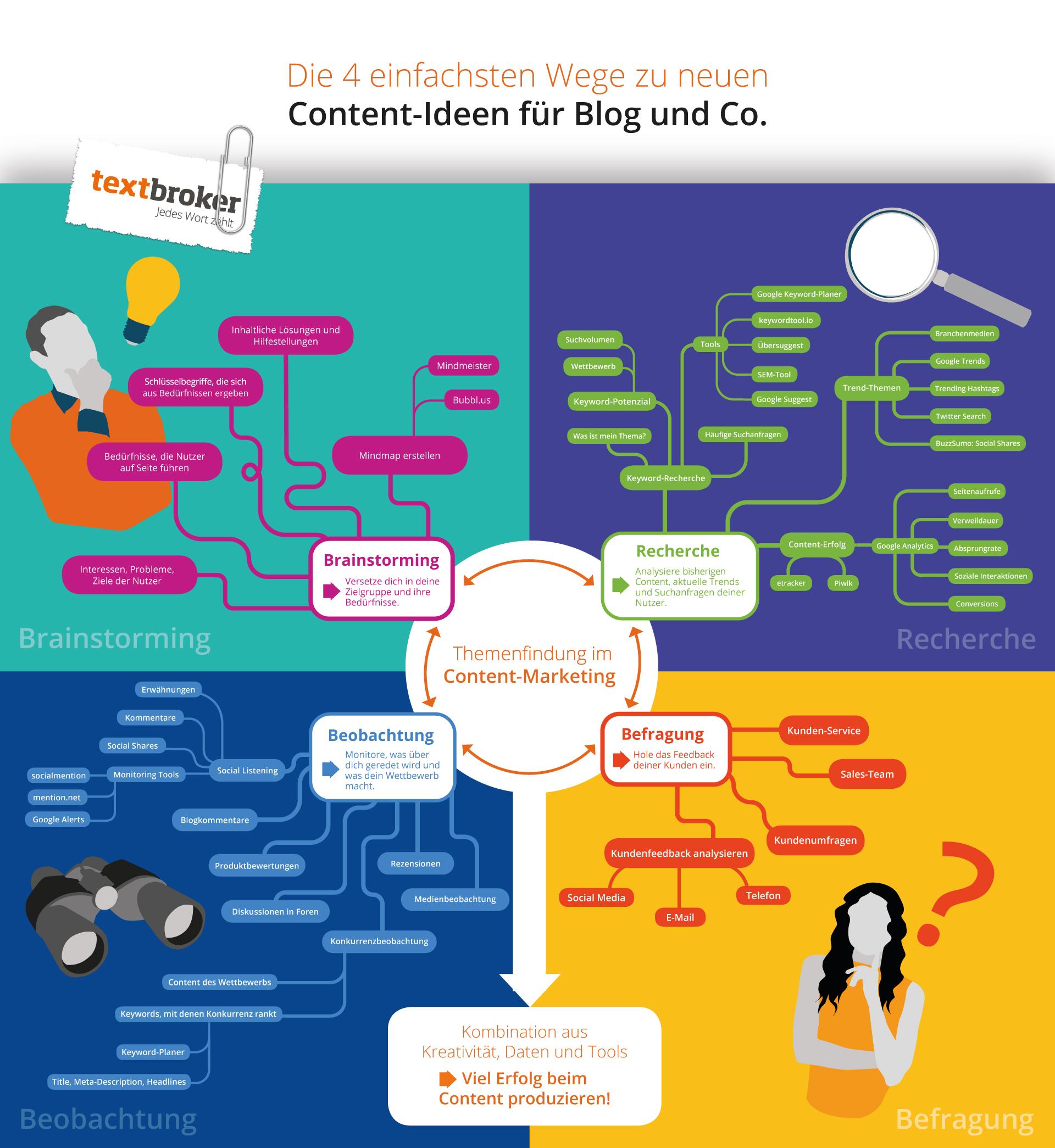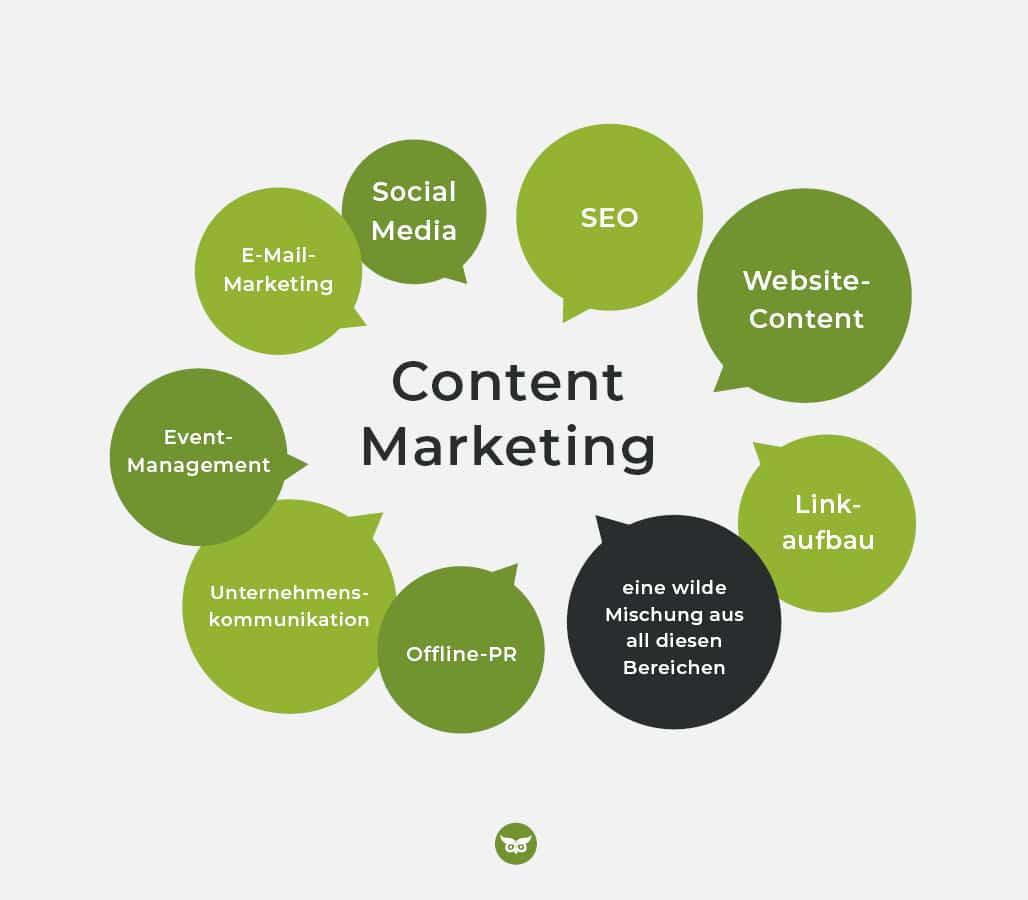Introduction: What is Content Marketing? Best Guide for Beginners
Hey there! So, you’ve probably heard the buzz about content marketing floating around the digital landscape. But what exactly is it, and why should you care? Well, if you’re looking to engage your audience, build your brand, and ultimately drive sales, understanding content marketing is essential. Think of it as the art of storytelling in the business world—creating valuable, relevant content that resonates with your target audience and keeps them coming back for more. In this guide, we’ll break down the essentials of content marketing in a way that’s easy to grasp, even if you’re just starting out. Whether you’re a small business owner, a budding entrepreneur, or someone curious about the digital marketing landscape, we’ll equip you with the knowledge and tools you need to embark on your content marketing journey. Ready to dive in and unlock the potential of your brand? Let’s go!
Understanding Content Marketing and Its Importance
Content marketing is more then just a buzzword; it’s a strategic approach aimed at creating valuable, relevant content to attract and engage a clearly defined audience. By doing so, businesses can drive profitable customer action. It’s not about selling products directly but about providing facts that can enhance the customer’s journey.
One of the key aspects of content marketing is its focus on building relationships with potential customers. Unlike conventional advertising, which often interrupts the consumer’s experience, effective content marketing seamlessly integrates into the consumer’s daily routine. when you offer content that resonates with your audience, you’re not just promoting your brand; you’re fostering trust and loyalty.
Here are some essential elements that underline the meaning of content marketing:
- SEO Benefits: Quality content improves your website’s visibility on search engines, making it easier for potential customers to find you.
- Cost-Effectiveness: Compared to traditional advertising, content marketing is frequently enough more affordable and more sustainable over time.
- Lead Generation: Engaging content can attract leads, helping to establish a sales funnel that nurtures prospects into customers.
- Brand Authority: By consistently providing useful information,your brand can become a trusted source in your industry.
Understanding your target audience is crucial in content marketing. By identifying their needs, preferences, and pain points, you can tailor your content to speak directly to them. this not only enhances engagement but also increases the likelihood of conversions. Consider using buyer personas to guide your content strategy, ensuring that each piece of content speaks to the right audience segment.
Incorporating various formats can also elevate your content marketing game. Depending on your audience’s preferences,consider utilizing:
- Blog Posts: Informative articles that provide in-depth insights.
- Videos: engaging visual content that can quickly convey messages.
- Infographics: Visually appealing summaries that simplify complex information.
- Podcasts: Audio content that allows for deeper discussions.
To illustrate the effectiveness of different content types, consider the following table highlighting engagement metrics:
| Content Type | Engagement Rate (%) |
|---|---|
| Blog Posts | 70 |
| Videos | 80 |
| Infographics | 65 |
| Podcasts | 75 |
Ultimately, content marketing isn’t just a trend; it’s a essential shift in how brands communicate with their customers. By embracing this approach, businesses can create meaningful connections that lead to long-term growth and success. Understanding this concept and its importance can empower you to craft a strategy that not only meets your business objectives but also resonates with your audience on a personal level.

The Key Components of a Successful Content Marketing Strategy
Every thriving content marketing strategy is built on a foundation of essential components that work together to engage audiences and drive results. Understanding these key elements is crucial for anyone looking to make an impact in the digital landscape.
Target Audience Identification
The first step in crafting an effective content marketing strategy is to pinpoint who your target audience is. This involves:
- Conducting market research
- Creating buyer personas
- Understanding audience pain points and preferences
When you know who you’re talking to, you can tailor your content to their interests and needs, making it far more engaging.
Content Creation
Quality content is the heart of any marketing strategy. This means producing valuable, relevant, and consistent content that resonates with your audience. Consider these types of content:
- Blog posts
- Infographics
- Videos
- Podcasts
Utilizing various formats not only keeps your audience engaged but also helps in reaching different segments of your target market.
Distribution Channels
Once your content is created,it’s essential to distribute it effectively. Think about where your audience spends their time online and focus on those channels. Popular distribution methods include:
- Social media platforms
- Email newsletters
- Guest blogging on reputable sites
By strategically placing your content where it can be seen, you can increase visibility and engagement.
Analytics and Measurement
To ensure your content marketing efforts are paying off,you need to track and analyze performance regularly. Utilize tools like Google Analytics to measure:
- Website traffic
- Engagement rates
- Conversion rates
Understanding these metrics allows you to refine your strategy over time and optimize your content for better results.
Consistency and Adaptability
Lastly, a successful content marketing strategy requires consistency in publishing and the adaptability to adapt to changing trends. Establish a content calendar to maintain regular posting schedules, but also be prepared to pivot your strategy in response to audience feedback or market changes.
By focusing on these vital components, you can build a robust content marketing strategy that not only attracts attention but also fosters lasting relationships with your audience.
Identifying Your Target Audience for Maximum Impact
Understanding who your audience is can dramatically change the effectiveness of your content marketing efforts. When you know who you’re speaking to, you can tailor your message to meet their needs, interests, and pain points. This not only helps in creating relevant content but also enhances engagement and fosters loyalty. Here’s how to get started:
- Demographics: Gather data on age, gender, education, location, and income levels. This information can help you shape your content to resonate with your audience. for example, a younger demographic may prefer more visual content, while older audiences might lean towards detailed articles.
- psychographics: Delve deeper into the interests, values, and lifestyle choices of your target audience. Understanding what drives them can help you create more compelling narratives. Are they environmentally conscious? Do they value luxury over practicality?
- Challenges and Pain Points: Identify the specific problems your audience faces. What questions are they asking? What solutions are they seeking? Addressing these challenges in your content can position you as a valuable resource.
- Preferred Channels: Discover where your audience spends their time online.Are they more likely to engage with your brand on social media platforms or through email newsletters? Tailoring your distribution strategy to these channels can increase your reach and impact.
Once you’ve gathered this information, it’s crucial to create customer personas—detailed profiles that encapsulate your ideal audience members. These personas will guide your content strategy, ensuring that every piece you create speaks directly to their needs and preferences.
To visualize your target audience effectively, consider using a table that outlines key characteristics and insights:
| Characteristic | Description |
|---|---|
| Age | 25-34 years |
| Interests | Sustainability, Technology, Travel |
| Preferred content type | Blogs, Infographics, Videos |
| Challenges | Lack of time for research |
Each piece of content you produce should reflect an understanding of these personas. By writing with your audience in mind, you create a connection that is more likely to lead to conversions, whether through shares, subscriptions, or sales. in the crowded digital landscape, presenting content that truly resonates can set you apart from the competition.

Creating High-Quality Content That Resonates
Creating content that truly resonates with your audience is both an art and a science. It’s about understanding their needs, desires, and pain points, and crafting messages that speak directly to those elements. Here’s how you can produce high-quality content that not only attracts attention but also fosters a connection.
First, you must know your audience. Conduct in-depth research to gather insights about their demographics,interests,and behaviors. Utilize tools like surveys, social media analytics, and keyword research to pinpoint what your audience is looking for. Once you know who you’re writing for,you can tailor your content to meet their specific needs.
Next, focus on storytelling. People connect with stories, not just facts and figures. weave personal anecdotes, case studies, or relatable scenarios into your content.This not only makes your writing more engaging but also helps your audience see themselves in the narrative. Such as, instead of simply outlining the benefits of a product, share a story about how someone’s life improved after using it.
Additionally, ensure that your content is both informative and actionable. readers seek out content not just to be entertained but to gain knowledge and insights that they can apply. Provide clear, step-by-step guides or tips that they can easily implement. Using bullet points can definitely help break down complex information into digestible pieces:
- Identify key topics that resonate with your audience.
- Create engaging headlines that capture interest.
- Include visuals to enhance understanding and retention.
- Encourage interaction through comments or social shares.
don’t underestimate the power of SEO. while resonating content is essential, it also needs to be discoverable. Use relevant keywords naturally within your content, optimize your titles, and include meta descriptions. This will increase your chances of being found by your target audience on search engines.
By focusing on these elements, you can create high-quality content that not only captures attention but also fosters deeper connections with your audience. The goal is to become a trusted resource for information, which in turn can lead to long-term relationships and brand loyalty.
| Content Element | Importance |
|---|---|
| Audience Research | Identifies target needs |
| Storytelling | Enhances engagement |
| Actionable Tips | Encourages implementation |
| SEO optimization | Improves visibility |

Choosing the Right Platforms to Share Your Content
When it comes to sharing your content, selecting the right platforms can make all the difference. Not every channel will resonate with your target audience or align with your marketing goals. Therefore,it’s crucial to research and select platforms that enhance your visibility,engagement,and overall effectiveness.
Start by identifying where your audience spends their time online. Consider the following popular options:
- Social Media: Platforms like Facebook, Instagram, twitter, and LinkedIn are essential for reaching diverse demographics. Tailor your approach to each platform’s unique audience.
- Blogs: Utilize your own website or guest post on others’ sites. Blogs are great for SEO and building authority in your niche.
- Video Platforms: YouTube and TikTok can help you engage visually. Video content is frequently enough more shareable and can capture audience attention quickly.
- Email Newsletters: Direct interaction via email helps nurture relationships and delivers content straight to your audience’s inbox.
After determining where your audience is active, consider the type of content you plan to share. each platform has its strengths:
| platform | Best For | Content Type |
|---|---|---|
| Community Engagement | Posts, Events, Live Videos | |
| Visual Impact | Images, Stories, Reels | |
| Professional Networking | Articles, Industry Insights | |
| YouTube | Video Marketing | Tutorials, Vlogs, Webinars |
additionally, monitor your analytics to see which platforms yield the best results. Don’t hesitate to experiment with different types of content or posting schedules. A/B testing can provide valuable insights into what resonates most with your audience.
remember that consistency is key. Whichever platforms you choose, maintain a regular posting schedule to keep your audience engaged. Quality content, paired with a strategic approach to platform selection, can substantially enhance your content marketing efforts, leading to improved brand awareness and customer loyalty.
The Role of SEO in Enhancing Your Content Reach
In the vast digital landscape, where countless pieces of content compete for attention, mastering the art of SEO is crucial for amplifying your reach. By optimizing your content for search engines, you ensure that it not only attracts visitors but also engages them effectively. here are some key aspects of how SEO enhances your content’s visibility:
- Keyword optimization: Integrating relevant keywords into your content helps search engines understand the context and relevance of your material. This means when users search for specific terms, your content has a better chance of appearing in the results.
- On-Page SEO: Elements like title tags, meta descriptions, and header tags play a vital role. Well-structured content not only improves SEO but also enhances user experience, making it easier for readers to navigate through your ideas.
- Mobile Optimization: With more people accessing content via mobile devices, ensuring your content is mobile-friendly is essential. Search engines prioritize mobile-optimized sites, meaning good SEO practices can significantly impact your reach.
Furthermore, quality backlinks are another cornerstone of effective SEO. When reputable sites link back to your content, it signals to search engines that your material is trustworthy and valuable. This not only boosts your ranking but also drives direct traffic from those links.Here’s a simple table that illustrates the importance of backlinks:
| Source of Backlink | Impact on SEO |
|---|---|
| High Authority Sites | Notable boost in ranking |
| Relevant Blogs | Moderate boost and targeted traffic |
| Social Media Platforms | Increased visibility and engagement |
Another vital aspect of SEO is the importance of creating engaging, high-quality content. Search engines are evolving to prioritize user experience, meaning content that keeps readers on the page, encourages interaction, and prompts shares will rank higher. Incorporating multimedia elements, such as images and videos, can significantly enhance user engagement and dwell time.
monitoring your SEO performance is essential for ongoing success. Using tools like Google Analytics and Search Console can provide valuable insights into how your content is performing. Understanding which keywords drive traffic, and also what content resonates most with your audience, allows for continual improvement and refinement of your strategy.

Measuring Success: Metrics That Matter in Content Marketing
In the fast-paced world of content marketing, understanding what success looks like is crucial. It’s not just about creating content; it’s about creating content that resonates and drives results. to truly gauge your effectiveness, focusing on the right metrics is key. Here are some essential metrics that can help you measure your content marketing success:
- Traffic: Tracking the number of visitors to your content helps you gauge interest levels. look at overall traffic and unique visitors to see how many new potential customers you’re attracting.
- Engagement: engagement metrics, including time spent on page, social shares, and comments, reveal how well your content resonates with your audience.
- Conversion Rate: This metric shows how many visitors take a desired action, such as signing up for a newsletter or making a purchase. high conversion rates indicate that your content is effectively guiding the audience toward decision-making.
- Return on Investment (ROI): Calculate the ROI by comparing the revenue generated from your content marketing efforts to the costs incurred. A positive ROI is a strong indicator of success.
Another way to assess your content’s impact is by analyzing the customer journey. Use metrics like lead generation and customer retention to understand how your content nurtures leads and maintains long-term relationships with customers. This holistic view allows for more strategic adjustments in your content planning.
Moreover, consider utilizing a table to compare your performance metrics over time. Here’s a simplified view:
| Metric | Month 1 | Month 2 | Month 3 |
|---|---|---|---|
| Traffic | 1,500 | 2,000 | 2,500 |
| Engagement Rate | 30% | 35% | 40% |
| Conversion Rate | 2% | 3% | 4% |
don’t underestimate the power of qualitative feedback. Surveys and direct feedback from your audience can provide insights that numbers alone might miss. Ask your readers what they love or what they wish would improve. This not only gives you actionable data but also fosters a deeper connection with your audience, enhancing their loyalty.
By focusing on these metrics, you can paint a clearer picture of your content marketing efforts and make informed decisions that drive growth. Remember, success in content marketing is as much about understanding your audience as it is indeed about the numbers.

Building a Content calendar for Consistency and Planning
Why a Content Calendar Matters
Creating a content calendar is your roadmap to successful content marketing. It provides a structured approach to planning and executing your content strategy. When you have a calendar in place, you’ll ensure that your content aligns with key dates, events, and campaigns that resonate with your audience. This not only helps in keeping your content organized but also enhances your brand’s consistency.
Key Components of a Content Calendar
When crafting your content calendar,consider including the following elements:
- Content Type: Specify whether it’s a blog post,video,infographic,etc.
- Publishing Date: Choose dates to maintain a steady flow of content.
- Target Audience: Define which segment of your audience the content will address.
- Keywords: Integrate SEO keywords to optimize search visibility.
- Metrics: Establish metrics to measure the performance of your content.
Creating Your Calendar
To start building your content calendar, you can use simple tools like Google Sheets, or opt for dedicated content management platforms that offer more features like collaboration and analytics. Here’s a basic structure to consider:
| Content Type | Publishing Date | Target Audience | Keywords | Metrics |
|---|---|---|---|---|
| Blog Post | April 1, 2023 | Small Business Owners | Content Marketing, SEO | Page Views, Shares |
| Video | april 15, 2023 | Millennials | Social Media Tips | Engagement Rate |
| Infographic | April 30, 2023 | Marketers | Data Visualization | Downloads, comments |
Staying Flexible
While a content calendar is essential for association, it’s also important to remain flexible. Trends change rapidly, and timely content can provide a significant boost to your marketing efforts.Allow some space in your calendar for spontaneous posts or to address current events that may resonate with your audience.
Review and Adjust
Lastly, regularly review your content calendar. Analyze what works and what doesn’t. By looking at performance metrics, you can adjust your strategies accordingly. This iterative process will not only help in refining your content but will also enhance your overall marketing efforts.

Engaging with Your Audience: The Power of Interaction
When it comes to building a successful content marketing strategy, the importance of connecting with your audience cannot be overstated. engaging directly with your audience transforms passive readers into active participants, creating a sense of community and loyalty that is invaluable. Here are some effective ways to foster interaction:
- Ask Questions: Encourage your audience to share their thoughts by posing open-ended questions at the end of your posts.this not only sparks conversation but gives you insight into what your readers are thinking.
- Utilize Polls and Surveys: Incorporate polls related to your content. This not only provides valuable feedback but also makes your audience feel involved in the content creation process.
- Create Shareable Content: Develop content that resonates with your audience, prompting them to share it within their networks. Infographics,quizzes,and relatable articles are excellent choices.
Utilizing social media platforms to engage with your audience opens up a world of opportunities. Here’s how you can leverage these platforms:
- Host Live Q&A Sessions: Engage your audience in real time by answering their questions. This builds trust and positions you as an authority in your field.
- Share User-Generated Content: Feature stories or posts from your audience that align with your brand.this not only shows appreciation but encourages more users to interact with your content.
- Respond to Comments: make it a habit to reply to comments on your blog or social media. Acknowledging your audience’s input reinforces their connection to your brand.
To understand the impact of engagement,let’s take a look at a simple comparison of engaged vs. unengaged audiences:
| Engaged Audience | Unengaged Audience |
|---|---|
| Higher conversion rates | Lower conversion rates |
| Frequent sharing of content | Minimal sharing |
| Valuable feedback and ideas | Limited feedback |
| Stronger community bonds | Weak or no community feeling |
Ultimately, the key to successful content marketing lies in your ability to engage your audience. By creating an inviting atmosphere that fosters interaction, you not only enhance your brand’s visibility but also cultivate a loyal following that feels heard and valued. so, don’t just create content—start a conversation!

Repurposing Content: Get More from What You Create
In the fast-paced world of digital marketing, creating great content is just the first step. Once you’ve invested time and effort into crafting an engaging blog post, video, or infographic, it makes perfect sense to squeeze every bit of value from it. Repurposing content means taking what you’ve already created and adapting it into new formats or for different audiences. This not only saves time but also broadens your reach.
Here are a few effective strategies to help you get started:
- Transform Blog Posts into Videos: Turn a well-performing blog post into a short video.Platforms like YouTube and TikTok thrive on video content, and this can definitely help you engage a whole new audience.
- Create Infographics: Summarize your blog posts with key points and statistics into visually appealing infographics.These can be shared on social media or included in newsletters.
- Podcast Episodes: If you have a series of related blog posts, consider discussing them in a podcast format. This taps into the growing audience of podcast listeners who prefer audio content.
- Social Media Snippets: Pull quotes or key insights from your content and turn them into social media posts. Use eye-catching graphics to boost engagement.
Repurposing content not only maximizes your original investment but also allows you to cater to different learning styles. Some people prefer reading, while others absorb information better through visuals or audio. By offering your content in multiple formats, you can appeal to a wider audience.
Here’s a quick comparison of potential repurposing methods and their benefits:
| Content Format | Benefits |
|---|---|
| Blog Post | in-depth information,great for SEO |
| Video | High engagement,visual appeal |
| Infographic | Easy to share,visually engaging |
| Podcast | On-the-go listening,personal connection |
Implementing these strategies can significantly enhance your content marketing efforts. Not only will you save time, but you’ll also ensure that your message reaches as many people as possible. Remember, the goal is to share your expertise and insights with your audience in a way that resonates with them.

Common Mistakes to Avoid in Your Content Marketing Journey
Embarking on your content marketing journey can be exciting, but it’s also filled with potential pitfalls that can derail your efforts. One of the most common mistakes is neglecting your audience.Remember, content is created for people, not for search engines. Understanding who your audience is and what they want is crucial. Take the time to develop audience personas and tailor your content to meet their needs and preferences. This can significantly enhance engagement rates and foster loyalty.
Another frequent misstep is inconsistency in publishing. Whether it’s a blog, social media updates, or email newsletters, maintaining a consistent schedule helps build anticipation and trust. When audiences know when to expect new content, they are more likely to return for more. Create a content calendar to plan and streamline your publishing efforts. This not only keeps you organized but also ensures a steady flow of fresh content.
It’s also important to avoid the trap of focusing solely on quantity over quality. While it’s tempting to churn out numerous pieces of content to keep your brand visible, sacrificing quality can harm your reputation. Always prioritize delivering valuable, insightful, and well-crafted content that resonates with your audience. A few high-quality pieces can have a more significant impact than numerous mediocre ones.
Additionally, disregarding SEO best practices is a mistake that can limit your content’s reach.While engaging content is key, it still needs to be discoverable. Incorporate relevant keywords naturally into your writing, optimize your titles and meta descriptions, and ensure your content is shareable. This can help drive organic traffic and improve your rankings on search engines.
Lastly, failing to analyze and adapt your strategy is a critical error. use analytics tools to track the performance of your content.Look for trends in what works and what doesn’t, and be willing to adapt your approach accordingly. By keeping a close eye on your metrics, you can continuously refine your strategy to better meet the needs of your audience.

Tips for Staying Inspired and Fresh in Your Content Creation
Keeping your creativity flowing can sometimes feel like a daunting task in the world of content marketing.Here are some effective strategies to ensure you remain inspired and your content stays fresh:
- Consume Diverse Media: explore content outside your usual niche. Watch documentaries,read novels,or listen to podcasts. The experiences and perspectives from different genres can spark new ideas.
- engage with Your Audience: Don’t forget to interact with your followers! their questions, comments, and feedback can provide a gold mine of inspiration for new topics and fresh angles.
- Set Creative Challenges: Challenge yourself to create content in different formats. For example, if you primarily write blog posts, try your hand at videos or infographics. This not only keeps things interesting but also broadens your skill set.
- take Breaks: Sometimes, stepping back is the best way to move forward. Allow yourself time to recharge—go for a walk, practice mindfulness, or indulge in a hobby to reset your creative energy.
- Collaborate with Others: Partnering with other creators can introduce you to new ideas and perspectives. Whether it’s guest blogging or co-hosting a podcast, collaboration can open up fresh avenues for creativity.
Consider setting up a content calendar to plan your ideas and make room for spontaneity. Here’s a simple structure you can follow:
| Day | Content Type | Theme/Topic |
|---|---|---|
| Monday | Blog Post | Latest Trends in Marketing |
| Wednesday | Social Media Post | User Engagement Strategies |
| Friday | Video Content | Behind-the-Scenes of My Process |
Lastly, don’t underestimate the power of reflection. Regularly review your past content to identify what worked well and what didn’t. This process not only highlights your growth but can also inspire new ideas based on your previous successes or challenges.
Frequently Asked Questions (FAQ)
Q&A: What is Content Marketing? Best Guide for Beginners
Q1: What exactly is content marketing?
A1: Great question! At its core, content marketing is all about creating and sharing valuable content to attract and engage a specific audience. Instead of just pushing your products or services, you provide useful information that helps your audience solve a problem or fulfill a need. The ultimate goal? Build trust and establish a relationship that leads to conversions down the line!
Q2: Why should I consider content marketing for my business?
A2: If you want to stand out in today’s crowded digital landscape, content marketing is essential. It not only helps you connect with your audience but also boosts your search engine rankings and builds brand authority. Plus, it’s cost-effective compared to traditional advertising methods! When you create high-quality content, you position yourself as a thought leader, and consumers are more likely to turn to you when they’re ready to make a purchase.
Q3: What types of content can I create?
A3: The possibilities are endless! You can create blog posts, videos, infographics, podcasts, eBooks, and social media posts, among others. The key is to choose formats that resonate with your target audience. For instance, if your audience prefers visual content, infographics or videos might be the way to go. Experiment with different types to see what gets the best engagement!
Q4: How do I know what content to create?
A4: Understanding your audience is crucial. Start by researching their interests, pain points, and questions. Tools like Google Trends, social media polls, and forums (like Reddit) can provide insights.Additionally, consider conducting surveys to directly ask your audience what they want to learn about. The more you know about them, the better you can tailor your content!
Q5: How frequently enough should I publish content?
A5: Consistency is key, but it’s more critically important to prioritize quality over quantity. Whether you publish once a week or once a month, make sure your content is valuable and well-crafted. If you can only manage one great piece of content per month, that’s better than churning out mediocre posts weekly. Find a schedule that works for you and stick to it!
Q6: What are some common mistakes to avoid in content marketing?
A6: Ah, great question! A few pitfalls to watch out for include:
- Neglecting your audience: Always keep their interests at the forefront.
- Being too promotional: Remember, content marketing is about providing value, not just selling.
- Ignoring SEO: Make sure your content is optimized for search engines to increase visibility.
- Inconsistent posting: Stay regular to keep your audience engaged.
- Not measuring results: Use analytics to track what works and what doesn’t so you can improve over time.
Q7: How can I measure the success of my content marketing efforts?
A7: Excellent question! You can track a variety of metrics, including website traffic, social media engagement, lead generation, and conversion rates. Tools like Google Analytics can help you understand how users interact with your content. Look for patterns—what type of content gets shared the most? Which posts lead to conversions? This data will guide your future content strategy.
Q8: Any final tips for beginners diving into content marketing?
A8: Absolutely! start small, be patient, and don’t be afraid to experiment.Understand that content marketing is a long-term strategy; it takes time to see results. Stay true to your brand voice, keep learning about your audience, and continuously refine your approach. Most importantly, have fun with it! the more passionate you are about your content, the more your audience will connect with it. Happy creating!
In Retrospect
Wrapping It Up: Your Journey into Content Marketing
so there you have it! Content marketing might seem a bit overwhelming at first, but once you break it down, it’s really about connecting with your audience in a meaningful way. Remember, it’s not just about selling a product; it’s about telling a story, sharing valuable insights, and building lasting relationships.
as you embark on your content marketing journey, keep in mind that it’s a process of experimentation and learning. Don’t be afraid to try new things and see what resonates with your audience. The more authentic and consistent you are,the more likely you’ll cultivate a loyal following that looks forward to what you have to say.
So, roll up your sleeves and get started! With the tips and strategies we’ve covered, you’re well on your way to creating compelling content that not only captures attention but also drives results. Dive in, stay curious, and let your creativity flow. The world of content marketing is waiting for your unique voice—make it heard!

